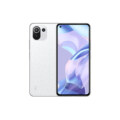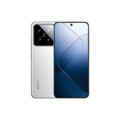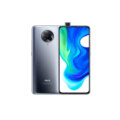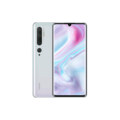Xiaomi Redmi Note 12S




Specs
General
| Device Type | Xiaomi Redmi Phone |
| Announced | 06 March, 2023 |
| Released | 26 April, 2023 |
| Status | Available |
Design
| Water Resistant | IP53, dust and splash resistant |
| Dimensions | 159.9 x 73.9 x 8.1 mm |
| Weight | 176 g |
| Protection | Plastic frame, plastic back |
| Colors | Onyx Black, Ice Blue, Pearl Green |
Display
| Refresh Rate | 90 Hz |
| Display Type Display Technology => A number of display technologies and types used in mobile phones => TFT (Thin Film Transistor), IPS (In-Place Switching), OLED (Organic Light Emitting Diode), AMOLED (Active-Matrix Organic Light-Emitting Diode), Super AMOLED (an even advanced version of AMOLED), Resistive Touchscreen (Resistive touchscreens contain two layer of conductive material with a very small gap between them which acts as a resistance), Capacitive Touchsceen (Capacitive touchscreen technology consists of a layer of glass coated with a transparent conductor) | AMOLED |
| Size | 6.43 inches |
| Resolution | 2400 x 1080 pixels (FHD+) |
| Display Colors Display Colors is refers to the number of different shades of colors that the screen is capable of displaying => 64K colors, 256K colors and 16 million colors, Obviously 16M is highest available range of colors and better than others. | 16M Colors |
| Pixel Density Pixel Density (PPI) is refers to the concentration of pixels on a particular display, measured in pixels per inch (ppi). Pixel density is calculated by dividing the diagonal pixel resolution of a display by its diagonal size, higher pixel density better display quality. | ~409 ppi |
| Touch Screen | Capacitive Touchscreen, Multitouch |
| Display Protection Display Protection => Gorilla Glass is a special alkali-aluminosilicate glass shield with exceptional damage resistance that helps protect mobile displays from scratches, drops, and bumps of everyday use, It is always better to go for a smartphone with Gorilla Glass for that added protection and peace of mind. | Corning Gorilla Glass 3 |
| Features | 700 nits (HBM), 1000 nits (peak) |
| Secondary Display | No |
Camera
| Front Camera | 16 MP, f/2.4, (wide) |
| Camera Setup | Triple |
| Main Camera Camera is able to capture photographs and usually videos, The most important characteristics of a camera are the resolution (measured in megapixels), lens focus type (fixed or automatic), higher megapixel cameras are known to capture higher quality photos, but not always a good measurement of the photos quality. |
108 MP, f/1.9, (wide), 1/1.52", 0.7µm, PDAF 8 MP, f/2.2, 118˚ (ultrawide), 1/4.0", 1.12µm 2 MP, f/2.4, (macro) |
| Image | 12000 x 9000 pixels |
| Video | 1080p @ 30fps |
| Camera Features | Geo-tagging, Phase detection, touch focus, HDR, Panorama |
| Flash Flash Light => There is commonly two types of flash lights are used in camera mobile phones, LED Flash (LED flash offers lower power consumption with drive circuitry that takes up very little room, LEDs can be strobed faster than any other light source), Xenon Flash (xenon flash produces an extremely intense full-spectrum white light for a very short duration) | LED flash, HDR, panorama |
Hardware
| Operating System OS => Every computer system run on a base software called Operating System (OS). Operating System controls all basic operations of the computer (such as smartphone, PDAs, tablet computers and other handheld devices). The Operating System allows the user to install and run third party applications (apps), apps are used to add new functionality to the device. | Android 12 |
| Chipset Chipset is a group of integrated circuits designed to perform one or a more dedicated functions, often with real time computing constraints, Popular smartphones are equipped with more advanced embedded chipsets that can do many different tasks depending on their programming. | MediaTek Helio G96 |
| CPU CPU (Central Processing Unit) mostly known as processors, CPU processes instructions in order to carry out certain functions that make your device operate properly. Processors are often described as the brain of computers, smartphones and tablets, Smartphones and tablets rely on processors to carry out their every task, Processors are an incredibly important factor in selecting any type of computing device, including your smartphone. | Octa-core (2x2.05 GHz Cortex-A76 & 6x2.0 GHz Cortex-A55) |
| Architecture | 64 bit |
| Fabrication | 12 nm |
| GPU GPU (Graphics Processing Unit) is a single-chip processor designed to rapidly manipulate and alter memory to accelerate the creation of images in a frame buffer intended for output to a display, This includes things such as lighting effects, object transformations, and 3D motion. | Mali-G57 MC2 |
| RAM (Memory) RAM (Random Access Memory) is a type of computer memory that can be accessed randomly, any byte of memory can be accessed without touching the preceding bytes that allows information to be stored and accessed quickly from random locations. RAM is the most common type of memory found in computer systems, smartphones, tablets and other electronic devices. | 8 GB |
| Internal Storage Internal Storage is a data storage space (flash memory) mostly used in smartphones, tablets and other electronic devices where operating system, apps, music, photos, videos, files and other user data Is stored. | 256 GB |
| Card Slot Memory Card Slot is a special slot for inserting a memory card. Memory cards allow you to expand the phone's built-in memory, A memory card (sometimes called a flash memory card or a storage card) is a small storage medium used to store data such as text, pictures, audio, and video, for use on small, portable or remote computing devices such as mobile phones, mp3 players, digital cameras. | |
| Sensors Sensors are electronic components that detects and responds to some type of input from the physical environment. The specific input could be light, heat, motion, moisture, pressure and location, The output is generally a signal that is converted to use in computing systems, a location sensor, such as a GPS receiver is able to detect current location of your electronic device. | Side-mounted fingerprint sensor, accelerometer, gyro, proximity, compass |
Network
| SIM TYPE SIM (Subscriber Identity Module) is a small card that contains mobile network subscriber's account information. This allows the phone using the card to attach to a mobile network. The SIM card is most commonly associated with GSM and UMTS mobile networks. Moving a SIM card from one phone to another allows a subscriber to switch mobile phones without having to contact their mobile network carrier. SIM cards can also be used by a phone to store limited amounts of data, such as phone numbers and text messages. | Nano SIM |
| SIM Technology | Dual SIM (Nano-SIM, dual standby) |
| 2G Network | GSM 850 / 900 / 1800 / 1900 |
| 3G Network | HSDPA 850 / 900 / 1700(AWS) / 1900 / 2100 |
| 4G Network | LTE band 1(2100), 3(1800), 7(2600), 8(900), 20(800) |
Multimedia
| FM Radio | |
| Stereo Speakers | NO |
| Loudspeaker | YES |
| Audio Jack | 3.5mm jack |
| Audio Features | Hi-Res Audio |
Connectivity
| Wi-fi Wi-Fi is a popular wireless networking technology using radio waves to provide high-speed network connections that allows devices to communicate without cords or cables, Wi-Fi is increasingly becoming the preferred mode of internet connectivity all over the world. | Wi-Fi 802.11 a/b/g/n/ac, dual-band |
| Bluetooth Bluetooth is a wireless communications technology for exchanging data between mobile phones, headsets, computers and other network devices over short distances without wires, Bluetooth technology was primarily designed to support simple wireless networking of personal consumer devices. | v5.2 with A2DP, LE |
| GPS GPS The Global Positioning System is a satellite-based radio navigation system, GPS permits users to determine their position, velocity and the time 24 hours a day, in all weather, anywhere in the world, In order to locate your position, your device or GPS receiver must have a clear view of the sky. | GPS (L1), GLONASS (G1), GALILEO (E1), BDS (B1) |
| USB | USB Type-C 2.0 |
| EDGE EDGE (Enhanced Data GSM Environment) is a wireless network technology generally considered the next step in the 2G network offers data transfer rates up to four times faster than ordinary GSM networks, Generally, EDGE is used for the purpose of wireless data transfer, such as sharing pictures and videos or browsing the Internet via a mobile phone connection. | |
| GPRS GPRS (General Packet Radio Service) is a packet oriented mobile data service on the 2G and 3G cellular communication system's global system for mobile communications (GSM), Generally, GPRS is used for the purpose of wireless data transfer, such as sharing pictures and videos or browsing the Internet via a mobile phone connection. | |
| Speed | 3G (HSPA 42.2/5.76 Mbps), 4G LTE-A |
| Wi-fi Hotspot | |
| NFC NFC (Near field communication) is a set of standards for smartphones and similar devices to establish peer-to-peer radio communications with each other by touching them together or bringing them into proximity, usually no more than a few inches. |
Features
| Messaging | SMS(threaded view), MMS, Email, Push Mail, IM |
| Web Browser Web Browser => a web browser is a software application used to locate, retrieve and display content on the World Wide Web, including Web pages, images, video and other files, The primary function of a web browser is to render HTML, the code used to design or markup webpages. | HTML5 |
| Games | Built-in + Downloadable |
| Torch |
Battery
| Battery Type Battery Type => Cell phones run on various kinds of batteries depending on the manufacturer, phone size or shape and features. There are basically four types of cell phone batteries => Lithium Polymer, Lithium Ion, Nickel Metal Hydride and Nickel Cadmium. | Li-Ion (Lithium Ion) |
| Capacity Battery Capacity is a measure (typically in Amp-hr) of the charge stored by the battery, and is determined by the mass of active material contained in the battery. The battery capacity represents the maximum amount of energy that can be extracted from the battery under certain conditions. | 5000 mAh |
| Placement | Non-removable |
| Wireless Charging Wireless Charging (Inductive Charging) uses an electromagnetic field to transfer energy between two objects. This is usually done with a charging station. Energy is sent through an inductive coupling to an electrical device, which can then use that energy to charge batteries or run the device. | No |
| Extra | 33W wired fast charging |
Xiaomi Redmi Note 12S Detailed Review
Introduction: The Xiaomi Redmi Note 12S is part of Xiaomi’s popular Redmi Note series, known for offering great value for money by providing competitive features at an affordable price. The Redmi Note 12S fits this trend, aimed at users looking for a budget-friendly phone with a solid set of specifications. Released in early 2023, it offers a good balance between performance, display quality, battery life, and camera capabilities. In this review, we’ll explore the Redmi Note 12S in detail, covering its design, display, performance, camera, battery, software, and overall user experience, along with a comprehensive list of pros and cons.
Specifications at a Glance
- Display: 6.43-inch AMOLED, FHD+ (2400 x 1080 pixels), 90Hz refresh rate
- Processor: MediaTek Helio G96
- RAM: 6 GB / 8 GB
- Storage: 64 GB / 128 GB (expandable via microSD)
- Rear Camera: 108 MP (wide) + 8 MP (ultra-wide) + 2 MP (macro)
- Front Camera: 16 MP
- Battery: 5000 mAh, 33W fast charging
- Operating System: MIUI 13 (based on Android 12)
- Audio: Dual speakers, 3.5mm headphone jack
- Connectivity: 4G, Dual SIM, Wi-Fi 5, Bluetooth 5.0, NFC
- Dimensions: 159.9 x 73.9 x 8.1 mm
- Weight: 179 grams
Design and Build Quality
Aesthetics:
The Xiaomi Redmi Note 12S follows a familiar design pattern seen in mid-range Xiaomi devices. It features a plastic back and a plastic frame, but the matte finish gives it a premium feel and minimizes fingerprints. The phone is available in three colors:
- Onyx Black
- Ice Blue
- Pearl Green
The phone’s camera module is positioned in the top-left corner and doesn’t protrude excessively, making the phone relatively easy to handle. The 179-gram weight and 8.1 mm thickness make it comfortable to hold and use, despite its large screen.
Build Quality:
While the plastic build keeps the cost down, the phone still feels sturdy and well-constructed. The front is protected by Corning Gorilla Glass 3, providing decent protection against scratches and drops. However, the plastic body may show signs of wear over time compared to metal or glass materials.
Ergonomics:
The Xiaomi Redmi Note 12S is relatively slim and lightweight, making it easier to handle than some larger smartphones. The 3.5mm headphone jack is a nice touch for those who prefer wired audio, and the phone also includes a side-mounted fingerprint sensor for quick and reliable unlocking.
Overall, the design of the Xiaomi Redmi Note 12S is attractive and functional, though it doesn’t stand out in terms of premium materials. It offers a good balance between ergonomics and durability for its price.
Display
Specifications:
- Size: 6.43-inch AMOLED
- Resolution: FHD+ (2400 x 1080 pixels)
- Refresh Rate: 90Hz
- Aspect Ratio: 20:9
- Brightness: Up to 700 nits (peak)
Performance:
The 6.43-inch AMOLED display is one of the highlights of the Xiaomi Redmi Note 12S. It offers deep blacks, vibrant colors, and good contrast, which is typical for AMOLED panels. The FHD+ resolution provides crisp and clear visuals, making it a great choice for media consumption and casual gaming.
The 90Hz refresh rate adds smoothness to the user experience, especially when scrolling through apps and websites or playing games. While not as fluid as a 120Hz panel, it’s a noticeable improvement over the standard 60Hz found in many budget phones.
Brightness and Outdoor Visibility:
With a peak brightness of up to 700 nits, the display remains usable in bright outdoor conditions. It’s not the brightest display on the market, but it performs well enough for most scenarios.
In summary, the display of the Xiaomi Redmi Note 12S is one of its stronger points, providing a great viewing experience for its price range.
Performance
Hardware:
- Processor: MediaTek Helio G96
- RAM: 6 GB / 8 GB
- Storage: 64 GB / 128 GB (expandable via microSD card)
The Xiaomi Redmi Note 12S is powered by the MediaTek Helio G96 processor, which is a mid-range chipset designed for everyday tasks and light gaming. It’s paired with either 6 GB or 8 GB of RAM, depending on the variant. The phone performs well for daily usage, such as browsing, social media, and watching videos, with minimal lag or stuttering.
Gaming:
While the Helio G96 is not a high-end gaming chipset, it can handle casual gaming and some graphically intensive titles at lower settings. Games like PUBG Mobile and Call of Duty Mobile can run smoothly, though you may need to dial down the graphics settings for a consistent frame rate.
Storage:
With 64 GB or 128 GB of internal storage, the Xiaomi Redmi Note 12S offers plenty of space for apps, photos, and videos. The inclusion of a microSD card slot allows users to expand the storage if needed, which is a plus for those who need extra space for media.
Overall, the Xiaomi Redmi Note 12S delivers solid performance for its price, handling everyday tasks and light gaming with ease, though it’s not designed for power users or heavy multitasking.
Camera
Rear Camera Setup:
- 108 MP primary sensor (wide, f/1.9)
- 8 MP ultra-wide sensor (f/2.2, 118° FOV)
- 2 MP macro sensor (f/2.4)
The Xiaomi Redmi Note 12S boasts a 108 MP primary camera, which is quite impressive for a budget phone. The high-resolution sensor captures detailed images, especially in good lighting conditions. Colors are accurate, and dynamic range is decent, thanks to Xiaomi’s image processing.
The 8 MP ultra-wide camera allows for more versatility in photography, though the image quality drops compared to the main sensor. The 2 MP macro camera is more of a gimmick, offering limited use for close-up shots with average quality.
Front Camera:
- 16 MP (f/2.4)
The 16 MP front camera performs well for selfies and video calls, producing sharp and well-lit images in good lighting. However, like most budget phones, it struggles a bit in low-light conditions.
Camera Features:
- Night Mode: The Night Mode on the primary camera helps improve low-light photography, though the results are not as good as on higher-end devices.
- Video Recording: The phone can record video at 1080p at 30fps. While video quality is good in daylight, it lacks the stabilization and resolution options found on more expensive devices.
In summary, the Xiaomi Redmi Note 12S’s camera system is one of its standout features for its price range, with the 108 MP sensor delivering excellent results in most situations.
Battery Life
Specifications:
- Capacity: 5000 mAh
- Charging: 33W fast charging
The 5000 mAh battery in the Xiaomi Redmi Note 12S offers excellent battery life, easily lasting a full day of moderate to heavy usage. Whether you’re browsing, streaming videos, or playing games, the phone has enough power to get you through the day without needing to recharge frequently.
Charging Speed:
The phone supports 33W fast charging, which can charge the battery from 0% to around 50% in 30 minutes. While this isn’t the fastest charging on the market, it’s more than adequate for most users, especially in this price segment.
Overall, the battery life of the Xiaomi Redmi Note 12S is excellent, making it a great option for users who prioritize long battery life and quick charging.
Software
Operating System:
- MIUI 13 (based on Android 12)
The Redmi Note 12S runs MIUI 13, Xiaomi’s custom skin on top of Android 12. MIUI is known for offering a plethora of customization options and features, but it can feel heavy at times, with pre-installed bloatware that some users might find unnecessary.
User Experience:
The user experience is generally smooth, thanks to the 90Hz display and optimizations in MIUI 13. However, some users might prefer a cleaner, stock Android experience, as MIUI’s interface can be overwhelming with its many features and options.
Updates:
Xiaomi’s track record for updates can be inconsistent, especially for mid-range devices. However, you can expect at least two years of software updates and security patches.
In summary, the MIUI 13 experience on the Redmi Note 12S is feature-rich but might feel a bit cluttered for some users who prefer a simpler interface.
Pros & Cons
Pros:
- High-Resolution Camera: The 108 MP primary camera delivers excellent photos for a budget device.
- AMOLED Display: The 6.43-inch AMOLED screen provides vibrant colors and deep blacks, along with a smooth 90Hz refresh rate.
- Great Battery Life: The 5000 mAh battery ensures long-lasting performance, with 33W fast charging for quick top-ups.
- Affordable Price: Offers great value for money, with a solid set of features for its price range.
- Expandable Storage: The microSD card slot allows for additional storage.
Cons:
- Plastic Build: While sturdy, the plastic body lacks the premium feel of metal or glass.
- Pre-Installed Bloatware: MIUI 13 comes with a fair amount of pre-installed apps, which might be annoying for some users.
- Macro Camera is Underwhelming: The 2 MP macro camera doesn’t add much value and delivers mediocre results.
- Limited 4G Connectivity: No 5G support, which could be a drawback for users looking for future-proof connectivity.
- Average Ultra-Wide Camera Performance: The ultra-wide camera doesn’t match the quality of the primary sensor.

Conclusion
The Xiaomi Redmi Note 12S is a solid mid-range phone that delivers great value for its price. Its standout features include the 108 MP camera, vibrant AMOLED display, long-lasting battery, and fast charging capabilities. However, it’s not without its compromises, such as a plastic build and some bloatware in MIUI. For users who prioritize camera quality, display performance, and battery life on a budget, the Redmi Note 12S is a compelling option.
In summary, the Redmi Note 12S is a well-rounded budget phone that offers a lot of features typically found on more expensive devices, making it a strong contender in the mid-range market.
Review
Disclaimer Note
All prices in Pakistan is updated daily from the price list provided by local shops and dealers but we can not guarantee that the information / price on this page is 100% correct (Human error is possible), always visit your local shop for exact cell phone cost & rate.














